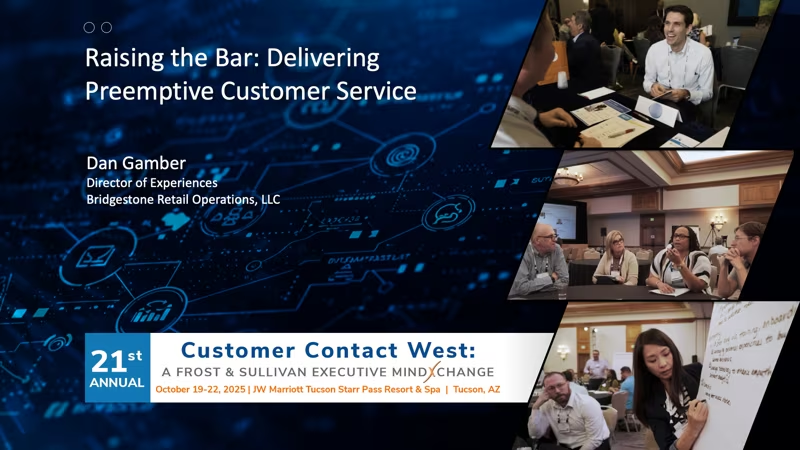Considering infusing Artificial Intelligence into your customer service channels? There are a number of reasons why you should! At first, our team at ECSI was skeptical about chatbots. Did we have enough technical ability to manage it? What would our customers think? Could we even afford it? We weren’t alone; we discovered many businesses were asking these questions. However, once we spent time learning how this technology could work for us operationally, financially, and from a service perspective, we became convinced it was the right move for us and our customers.
At ECSI we took a phased approach to building chatbots for each of our product lines. We started with service campaigns that were mostly transactional and routine in nature; areas where exceptions and higher level decision making aren’t usually needed. As the finished chatbot went live with each campaign we gained significant advantages.
Of course, the chatbot didn’t come out of the box ready to start talking to customers. We had a lot of work to do. Our bot journey isn’t over and we see it continuing to evolve over the next year, but we have already learned many lessons along the way. Here are a few:
Tip #1 – Understand your customers and your business.
Chatbots are not for everyone and they are not for all types of work. When interviewing other financial businesses that were using chatbots a theme we picked up on was that bots are excellent at handling mundane, routine questions and tasks (example: when a payment is due and how much is due). However, there was still a struggle when it came to handling situations that required in depth conversation about a unique situation (example: someone who wants to dispute their credit reporting).
Additionally, we learned that (generally speaking) chatbot acceptance can vary by demographic. Not surprisingly, chatbot use is not just more regularly accepted by younger populations, but increasingly it is an expected and preferred communication channel. At ECSI we support current and recently graduated college students and we have certainly found this to be true. Depending on the industry and demographic that you serve, your experience may be different.
Tip #2 – Treat your chatbot like a brand new employee.
Day 1 working with our chatbot was a lot like receiving an exciting new toy at Christmas only to find out there is a lot of assembly required. It is not going to come out of the box, jump to work, and immediately clear out your chat queue.
However, it will have a tremendous capacity to learn huge amounts of data very quickly. Our best success came from treating the bot as if it was a brand new employee. We trained our most seasoned staff to use bot design and editing tools so they could create hundreds of workflows, along with thousands of question variations and answers to all of them. We also used the opportunity to build empathetic statements and affirmations into the bot’s dialogue.
The bot learned quickly and we spent lots of time testing and challenging it. Once it went live, our staff monitored it’s work, identified chats where a customer stumped it and then trained the bot on that particular situation.
Tip #3 – Don’t forget to invest in people!
For us, chatbot technology was brand new and we realized that we would need people to provide continuous quality assurance, training, and management of the bot.
We invested early in educating two live chat representatives who excelled at their job and showed the aptitude to learn how to effectively use and manage our chatbot technology. We utilized the vendor’s professional services, as well as outside training services to provide them appropriate education. Taking top performers out of the queue did result in discussion, but paid off in the long run. By leveraging their new skillset, along with their expertise on all things ECSI, our chatbot’s first time resolution rate continues to rise every month.
Tip #4 – Monitor the bot metrics.
Your new chatbot should also come with lots of reporting and metrics that will help you quickly identify what is working, show you where more attention is needed, and help you understand customer needs at a deeper level. It is important to set up appropriate dashboards and feedback early on so your staff will be able to build on successes and fix anything that may detract from an excellent experience for customers.
Our chatbot was able to show us topics and questions that often led to escalations. We used that information to build a better website experience for our customers. We were also able to train our chatbot with better information and more resources to share with customers.
Finally, ask your customers what they think of the bot and use their feedback to improve the chatbot experience. We do that by attaching various surveys to all chats regardless of whether it was a bot or person who handled it.
Next steps.
Chatbots are a work in progress. There are still going to be some situations where they simply cannot compete against the understanding, specialized expertise, or empathy of a person. However, for us the use of chatbots has certainly been paying off.
Service for product lines with a chatbot is now 24/7 and there are no more wait times. Our bots handle approximately 65% of all incoming chat traffic in about 1/3 the time it took CSRs to chat, and 30% of our overall chat traffic is now being handled after traditional weekday business hours. It has allowed us to provide better customer service (based on CSAT scores) with fewer people (lost to pandemic related attrition).
We are looking forward to what the next year brings as we continue to merge bots and people to create a superior service experience.
Mike Bowman, Director of Servicing Operations at ECSI.
Mike is responsible for all of the customer facing and back office operations at ECSI. Mike has been working in leadership positions within operations, customer service, and contact centers for over 20 years. He joined ECSI in August 2016 and has focused on designing positive customer experiences by providing both the highest level of traditional customer service, as well as, the most current, best in class, digital service technology.



